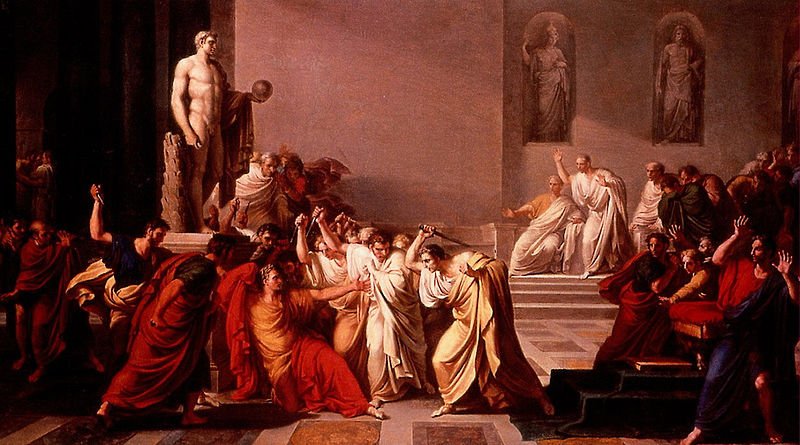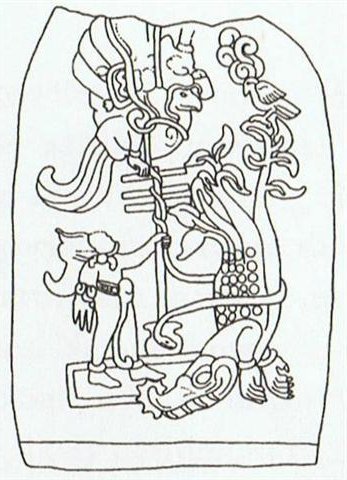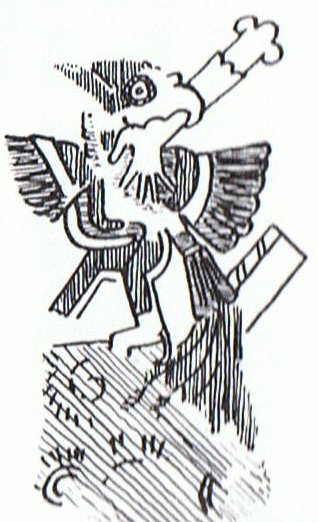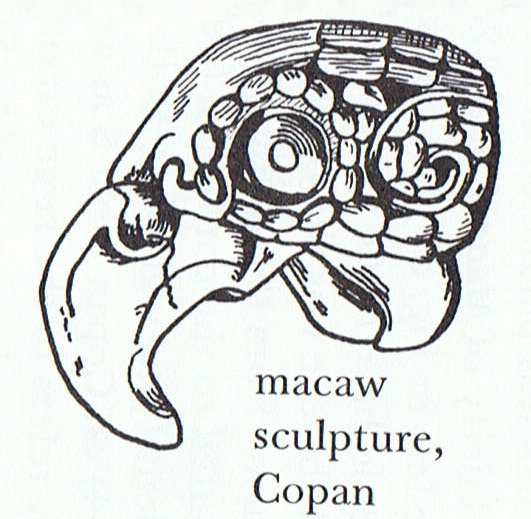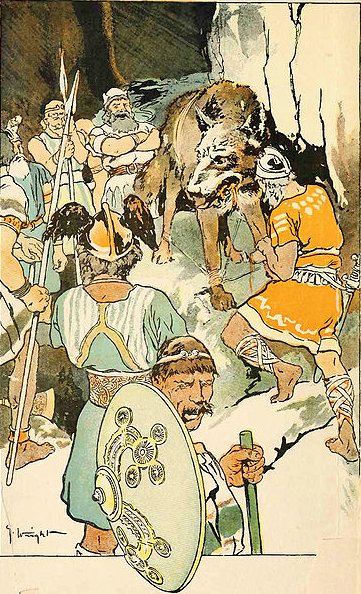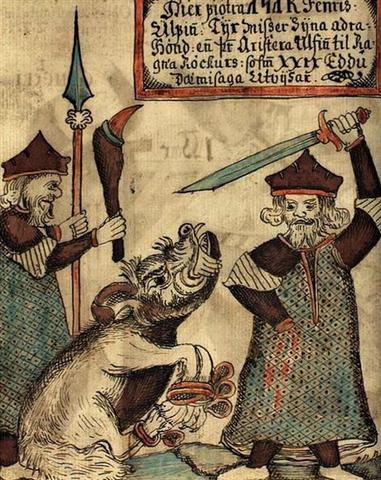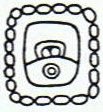A significant detail was that Captain Cook (Lono) was stabbed with an iron knife - a signature of Mars: ... When he came ashore, the common people as usual dispersed before him and prostrated face to earth; but in the end he was himself precipitated face down in the water by a chief's weapon, an iron trade dagger, to be rushed upon by a mob exulting over him, and seeming to add to their own honors by the part they could claim in his death: 'snatching the daggers from each other', reads Mr. Burney's account, 'out of eagerness to have their share in killing him' ...
It was like a repetition of the death of Julius Caesar, who also played God and who also was stabbed in his back with everyone eager to take part: ... I was too lazy to search for Gibbons. Instead a quick look in Wikipedia was immediately rewarding. He was killed in the 'ides of March' (= March 15). And of course, Brutus was not alone - he had a bunch of companion brutes ...
... The brutes of spring caused the downfall of both Captain Cook and Julius Caesar. We are close to the key myth of mankind, that which explains the regeneration of sun and of growth. Once at least some people kept the tradition living. I became interested in what really happened at March 15 and reopened Henrikson to find out. Caesar was forewarned of the threat by the prophet Spurinna, who told him that a great threat was coming at Idus Martiae or just before. The day arrived and Caesar was still living, walking to his meeting with the Senate when he happened to encounter Spurinna and told him jokingly that he was still alive. Spurinna calmely answered that the day had yet not ended. The Romans divided their months in two parts and the dividing point was Idus, which in some way was connected with full moon. March 15 was the midpoint of March, which is close to spring equinox. The old agricultural year defined the beginning of the year to the time when sun returned, and it was connected with Mars ...
In a way MARCH 14 (73) corresponded to π because it could be written 3-14. Half a cycle (circle, circuit) should have ended here. And Julius Caesar was born just after the summer solstice, where once upon a time Mercury ruled in Virgo. July was named after Julius Caesar: ... At the beginning of 44 B.C. - when Ceasar was still alive - the Senate decided to raise statues of him in all the temples and to sacrifice to him on his birthday in the month Quintilis, which in honour of him was renamed July. He was raised to the status of a god (among the other gods of the state) under the name Jupiter Julius. Marcus Antonius, who this year was consul together with Ceasar, became high priest and responsible for the ceremonies. In the middle of February, at the time of the old feast of Lupercalia, he ran around naked (except for a girdle - like a maro), and whipped the Roman ladies with thongs made from goat-skin, in order to promote ('kick' - Rei), their fertility ... ... Februa, also Februatio, was the Roman festival of ritual purification, later incorporated into Lupercalia. The festival, which is basically one of Spring washing or cleaning (associated also with the raininess of this time of year), is old and possibly of Sabine origin. According to Ovid, Februare as a Latin word which refers to means of purification (particularly with washing or water) derives from an earlier Etruscan word referring to purging. The Roman month Februarius ('of Februa', whence the English February) is named for the Februa/Februatio festival, which occurred on the 13th to 15th days of this Roman month. A later Roman god Februus personified both the month and also purification, and is named for them. Thus, the month is named for the festival and not for the god ... ... Moving ahead in the week Thursday (the day of Jupiter, the Oak Door) will be next. However, we know Mercury was later in the Babylonian cosmogram than Jupiter. Mercury was between 'straw' (Furrow) and 'leaf' (Frond) in Virgo and Jupiter was at the head of the Lion (and at the feathered wings of the Serpent). But if the beginning was in Virgo, then Jupiter should be at the end, leaving a dark time until the next beginning. For instance, 472 (= 8 * 59) - 399 (circuit of Jupiter) = 73 (= 365 / 5) ... In MARCH 14 (73), a month after FEBRUARY 14 (45), the central star in Virgo (Mother Earth) - γ Virginis, Porrima, at her girdle - was culminating at midnight:  ... The chaotic tumult in the Curia (where the Senate had their meeting and where they killed Caesar) resulted in his dead body left lying on the floor, while all the Senators panicked and ran out through the doors in different directions. They had planned to throw his body into the river, but the time of plans and order was in the past. Instead, in the afternoon, three of the slaves of Caesar came and fetched his body, and carried him on a stretcher to his home south of Forum - and one arm was hanging down in the corner where the 4th slave should have been ... One of the dead Caesar's hands could have been in touch with Mother Earth, which was quite in order for a Mercury person. At Spica was the beginning of a new cycle. This was where the Chinese began their calendar structure. And it had to do with a Crocodile (the animal of Dendera):
... At a rather isolated place at the edge of the desert, about 2.5 kilometers ... south-west of the modern town, lies what Dendera is famous for, a mostly Graeco-Roman temple complex known in ancient Egyptian as Iunet or Tantere. The modern Arab town is built on the ancient site of Ta-ynt-netert, which means 'She of the Divine Pillar'. It was once the modest capital of the 6th Nome (Pharaonic province) of Upper Egypt, and was also called Nikentori or Nitentori, which means 'willow wood' or 'willow earth'. Some scholars believe the name derives from the sky and fertility goddess Hathor, also associated with the Greek Aphrodite, who was especially worshiped there. The official deity of the city was a crocodile ...
As I remember it the right hand of the Sun person in this Mayan illustration had been taken by Macaw - a bird which could be identified from the 'ring of beads' around his eye:
In another version Mars (Tyr) sacrificed his right hand in the mouth of the Wolf:
... 'Quiche mol - ring - seems descriptively apt for the glyph' ... According to Gates this month sign [Mol] is the only one which necessarily is surrounded by a circle of dots. From Kelley I have copied these three examples [and reversed them] ...
Accordingly I maybe should revise my earlier suggestion that Macaw might have been at (or rather in) the Well (Ch'en):
However, there is no ring of dots (beads, droplets, tears) around this Mol - possibly they came later in the rain clouds - and day 160 could correspond to °June 9 (160) in the Gregorian calendar: ... The seventh tree is the oak, the tree of Zeus, Juppiter, Hercules, The Dagda (the chief of the elder Irish gods), Thor, and all the other Thundergods, Jehovah in so far as he was 'El', and Allah. The royalty of the oak-tree needs no enlarging upon: most people are familiar with the argument of Sir James Frazer's Golden Bough, which concerns the human sacrifice of the oak-king of Nemi on Midsummer Day. The fuel of the midsummer fires is always oak, the fire of Vesta at Rome was fed with oak, and the need-fire is always kindled in an oak-log. When Gwion writes in the Câd Goddeu, 'Stout Guardian of the door, His name in every tongue', he is saying that doors are customarily made of oak as the strongest and toughest wood and that 'Duir', the Beth-Luis-Nion name for 'Oak', means 'door' in many European languages including Old Goidelic dorus, Latin foris, Greek thura, and German tür, all derived from the Sanskrit Dwr, and that Daleth, the Hebrew letter D, means 'Door' - the 'l' being originally an 'r'. Midsummer is the flowering season of the oak, which is the tree of endurance and triumph, and like the ash is said to 'court the lightning flash'. Its roots are believed to extend as deep underground as its branches rise in the air - Virgil mentions this - which makes it emblematic of a god whose law runs both in Heaven and in the Underworld ... The month, which takes its name from Juppiter the oak-god, begins on June 10th and ends of July 7th. Midway comes St. John's Day, June 24th, the day on which the oak-king was sacrificially burned alive. The Celtic year was divided into two halves with the second half beginning in July, apparently after a seven-day wake, or funeral feast, in the oak-king's honour ...
... This pot depicts one of the Hero Twins (One-Ahaw in the Classic texts and One-Hunaphu in the K'iche' Popol Vuh) and a great bird who is trying to land in a huge ceiba tree heavy with fruit. This mythical bird is Itzam-Yeh, Classic prototype of Wuqub-Kaqix, 'Seven-Macaw', of Popol Vuh fame. In that story, in the time before the sky was lifted up to make room for the light, the vainglorious Seven-Macaw imagined himself to be the sun. Offended by his pride, the Hero Twins humbled him by breaking his beautiful shining tooth with a pellet from their blowgun. This pot shows One-Ahaw aiming at the bird as he swoops down to land in his tree. As Itzam-Yeh lands on his perch, the text tells us he is 'entering or becoming the sky'. This particular 'sky-entering' is not the one mentioned in the Palenque text. It is the final event that occurred in the previous creation before the universe was remade. Before the sky could be raised and the real sun revealed in all its splendor, the Hero Twins had to put the false sun, Itzam-Yeh, in his place. If the date on this pot corresponds to that pre-Columbian event, as we believe it does, then Itzam-Yeh was defeated on 12.18.4.5.0 1 Ahaw 3 K'ank'in (May 28, 3149 B.C.). After the new universe was finally brought into existence, First Father also entered the sky by landing in the tree, just as Itzam-Yeh did ... (Maya Cosmos) |
||||||||||||||||||||||||||||||||||||||||||||||||||||||||||||||||||||||||||||||||||||||||||||||||||||||||||||||||||||||||||||||||||||||||||||||||||||||||||||||||||||||||||||||||||||||||||||||||||||||||||||||||||||||||||||||||||||||||||||||||||||||


